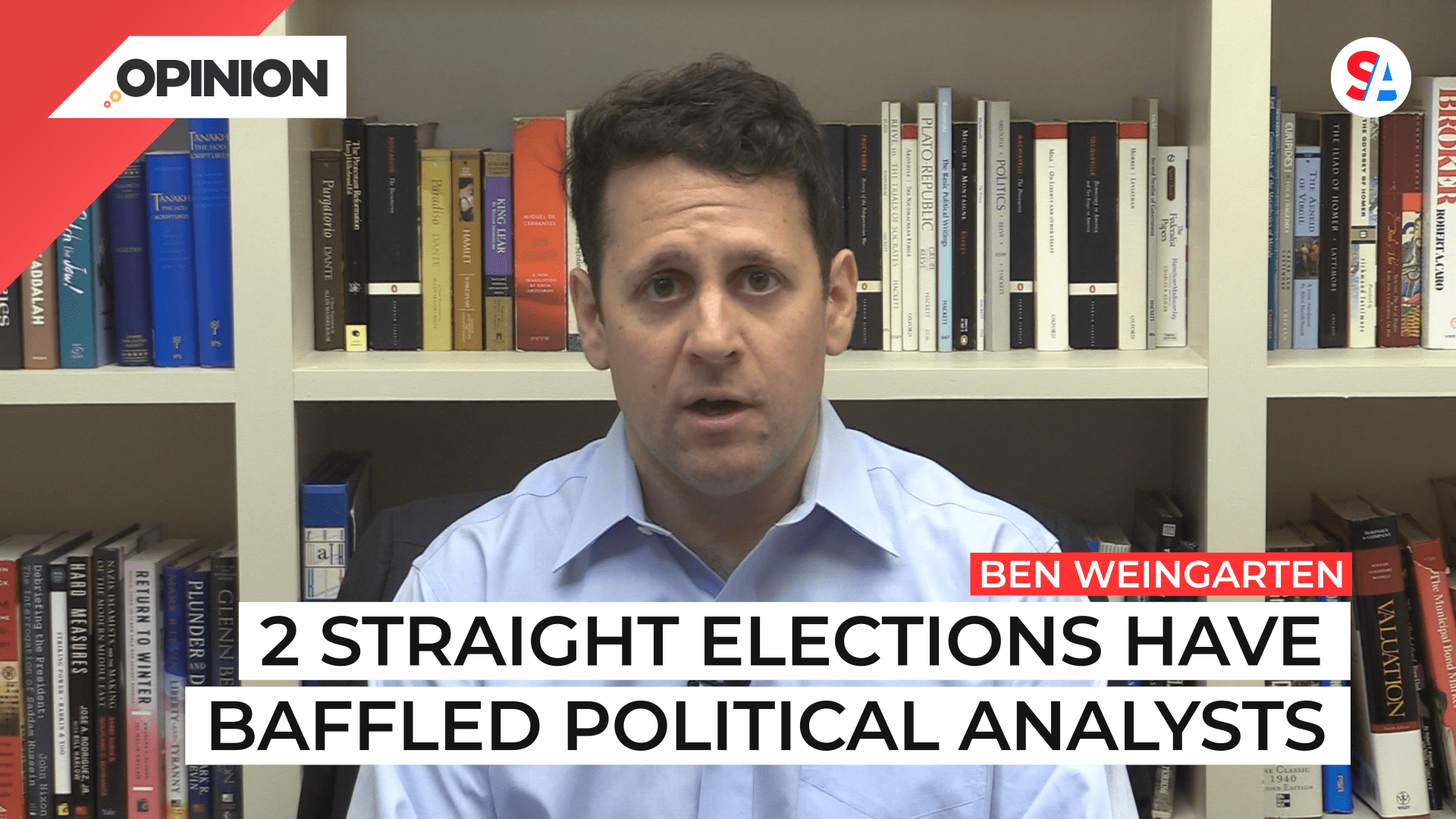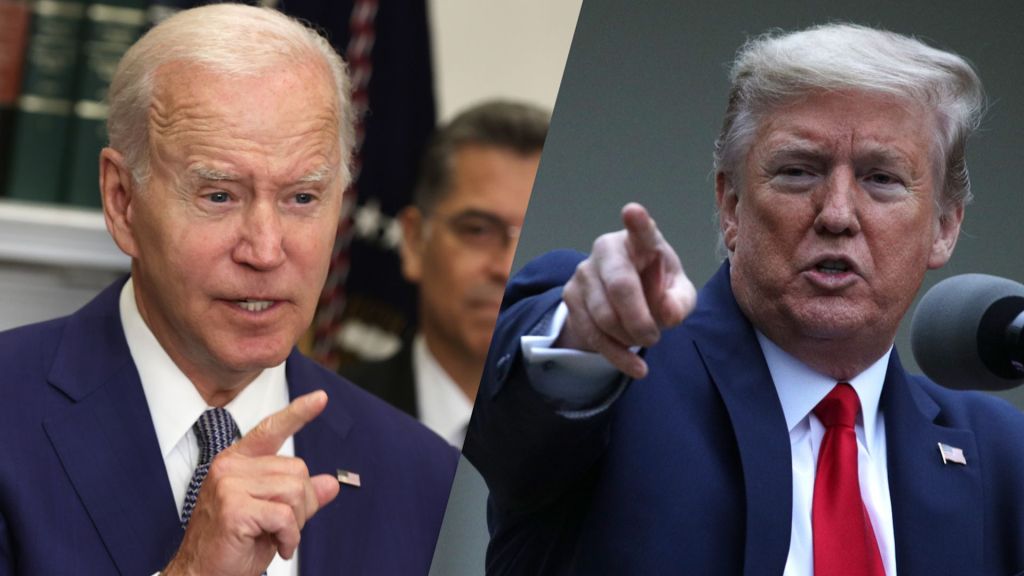
Commentary
-
Our commentary partners will help you reach your own conclusions on complex topics.
The midterm elections provided some historically odd results. Florida had a red wave. Republicans’ best-in-a-generation gains in New York suggested it would have legs. The GOP won the popular vote by several million people – about a 7-point swing from D to R in the popular vote from 2020 to 2022.
Add in the unpopular president, an economy in shambles that voters said was their number one issue, and the big midterm gains the out-of-power party usually makes under these circumstances, and that Republicans only secured the House by a razor-thin margin looks like a major anomaly.
As we said in our post-election commentary, there are any number of explanations for these results. For my money, I think after two straight elections that have baffled political analysts in terms of divergences in outcomes, and massive delays in hotly-contested swing states that we rarely used to see – we ought to look at common elements.
Maybe the most meaningful one is the voting system itself – one increasingly dominated by remote and early voting.
Whether you think it’s decisive, the radical alterations to our voting system from one in-person, with ID on a single election day, to one increasingly remote with lax ID standards, over election weeks, are a distinguishing feature of the last two races. One party advocated for them and was best-positioned to exploit them, and one party seems to have disproportionately reaped the benefits from them. When we see results coming in days after election night, and in these hotly-contested swing races with Democrats overwhelmingly seeming to prevail, it raises legitimate questions.
The questions are baked into the system itself. Mail-in voting leaves us to ponder whether:
The person casting the ballot is who he claims to be; someone other than the voter filling it out; the voter filled the ballot out under the watchful eye of a third party who might have been actively persuading, coercing, or inducing him to vote a certain way. And, whether one could ever hope to detect these and other issues.
We know that activists have targeted nursing homes and other presumably more vulnerable targets to drive absentee votes – obviously with the voters potentially facing pressure and perhaps unaware as to the candidates and the issues at play. Is that really democracy?
The potential issues multiply when we consider the increased duration of early voting, which means more time for fraud and other shenanigans to occur; the normalization of ballot harvesting; dirty voter rolls; and the partisan voter mobilization and participation drives that have marked recent races.
Before recently recanting, Jimmy Carter acknowledged via a bipartisan 2005 report on federal election reform, that “Absentee ballots remain the largest source of potential voter fraud,” citing just the points i did. The report added that “‘third-party’…voter registration drives” like those effectively facilitated by Zuckerbucks in 2020, and perhaps by federal agencies in 2022, “led to a rise in reports of voter registration fraud.”
As the New York Times wrote in 2012, “On the most basic level, absentee voting replaces the oversight that exists at polling places with something akin to an honor system. The Times continued, “Voting by mail is now common enough and problematic enough that election experts say there have been multiple elections in which no one can say with confidence which candidate was the deserved winner.”
Remote voting at very minimum presents the potential for less safe and secure elections. There have been myriad instances of people engaging in related fraud – even as hard as it is to detect; even the non-fraudulent behavior itself is sketchy or at minimum, unethical. The remote and early voting scheme calls into question the integrity of our races. Skepticism grows when you have in-person election day voters – disproportionately Republicans – facing hardships at the polls.
In 2022, from Maricopa County, Arizona to Mercer County, New Jersey, electronic tabulation machines malfunctioned en masse. Machines with literally one job on the one day they’re supposed to work, didn’t. The RNC alleged voter disenfranchisement in Maricopa, and sought to extend the time period on election night so people turned away or who faced issues could vote, but a judge dismissed the case.
Democrats who have fought tooth and nail for all manner of absentee ballots cast improperly to be counted – whether postmarked late or received after election day, or mismarked were silent.
In Luzerne County, Pennsylvania, 44 polling locations reportedly ran out of paper to print ballots. Ballot machines went down in Harris County, Texas. Problems proliferated nationwide.
And then Arizona and Nevada of course took days to report their results.
How is it possible in the most technologically advanced time in human history, when Florida with a population two times greater than Arizona and Nevada combined, could report results on Election Night, but the Sun Belt states couldn’t? It’s not a matter of *couldn’t*… it’s a choice to pursue a voting system that undermines our confidence in it.
The longer the time to election day and the more remote the vote, the greater opportunity for fraud and shenanigans – or at minimum the perception of it. Likewise, the longer time to count the votes, the greater our skepticism about the results.
Republicans now face a question: If the temporary COVID-driven emergency voting measures are now permanent and normal and without state control, they can’t vote return to the traditional elections model, then should they compete like Democrats and go all-in on ballot harvesting efforts however unsavory, driving early and absentee votes too?
Practically, they may have to. But this is an inadvertent admission that the American people themselves, by way of their leaders, no longer believe in an election system of the highest integrity. That we have now embraced a rotten system for two cycles is a telling commentary on the perilous state of our republic.
-
Why misguided Biden is siding with Iran over Israel
The situation in the Middle East is becoming more complex, and President Biden faces a delicate situation as he seeks to prevent a broader conflict in the region. Following Iran’s unprecedented airstrikes on Israel, prompted by Israel’s alleged destruction of Iran’s consulate in Damascus, Biden asserts that he’s against participating in Israeli retaliatory strikes on…
-
Democratic voter registration scheme gains momentum
Over 158 million Americans voted in the 2020 elections, representing roughly two-thirds of all eligible U.S. voters. Despite this historic engagement, U.S. voter participation continues to lag behind that of similarly advanced democracies around the world. Straight Arrow News contributor Ben Weingarten argues that in their efforts to mobilize more voters, various U.S. organizations, including…
-
’60 Minutes’ tries but fails to tackle disinformation crisis
On March 24, “60 Minutes” published a segment examining the relationship between government authorities and private social media companies regarding the moderation of potentially dangerous content on popular social media platforms. The episode also examined how disinformation spreads, what makes social media users vulnerable to false information and how users can take steps to combat…
-
Supreme Court threatens free speech rights in Murthy case
The Supreme Court recently heard oral arguments in Murthy v. Missouri, a case concerning government communications with social media companies, and whether those communications amount to censorship. The justices seem opposed to the plaintiff’s arguments that the government’s efforts to combat online misinformation about COVID-19 and U.S. elections constituted censorship. Straight Arrow News contributor Ben…
-
GOP House report exposes Jan. 6 panel and its witnesses
A new GOP House report investigating the bipartisan Jan. 6 committee accuses that committee of partisanship and questions some Jan. 6 witnesses. The report was chiefly authored by Rep. Barry Loudermilk, R-Ga, who has been accused of giving reconnaissance tours to domestic terrorists the day before the attack itself. Loudermilk says his report is important…
Latest Opinions
-
 Getty Images
Getty Images
More Dems signal willingness to save Johnson from speakership vote
-
 Getty Images
Getty Images
NASA worm returns as interest in space grows around the world
-
 Reuters
Reuters
SF DA seeks restitution for drivers delayed by Golden Gate Bridge protest
-
 Getty Images
Getty Images
Mexico disrupts China’s potential plan to infiltrate US EV market
-
 Getty Images
Getty Images
Free speech fight after USC cancels valedictorian’s speech
Popular Opinions
-
In addition to the facts, we believe it’s vital to hear perspectives from all sides of the political spectrum.


